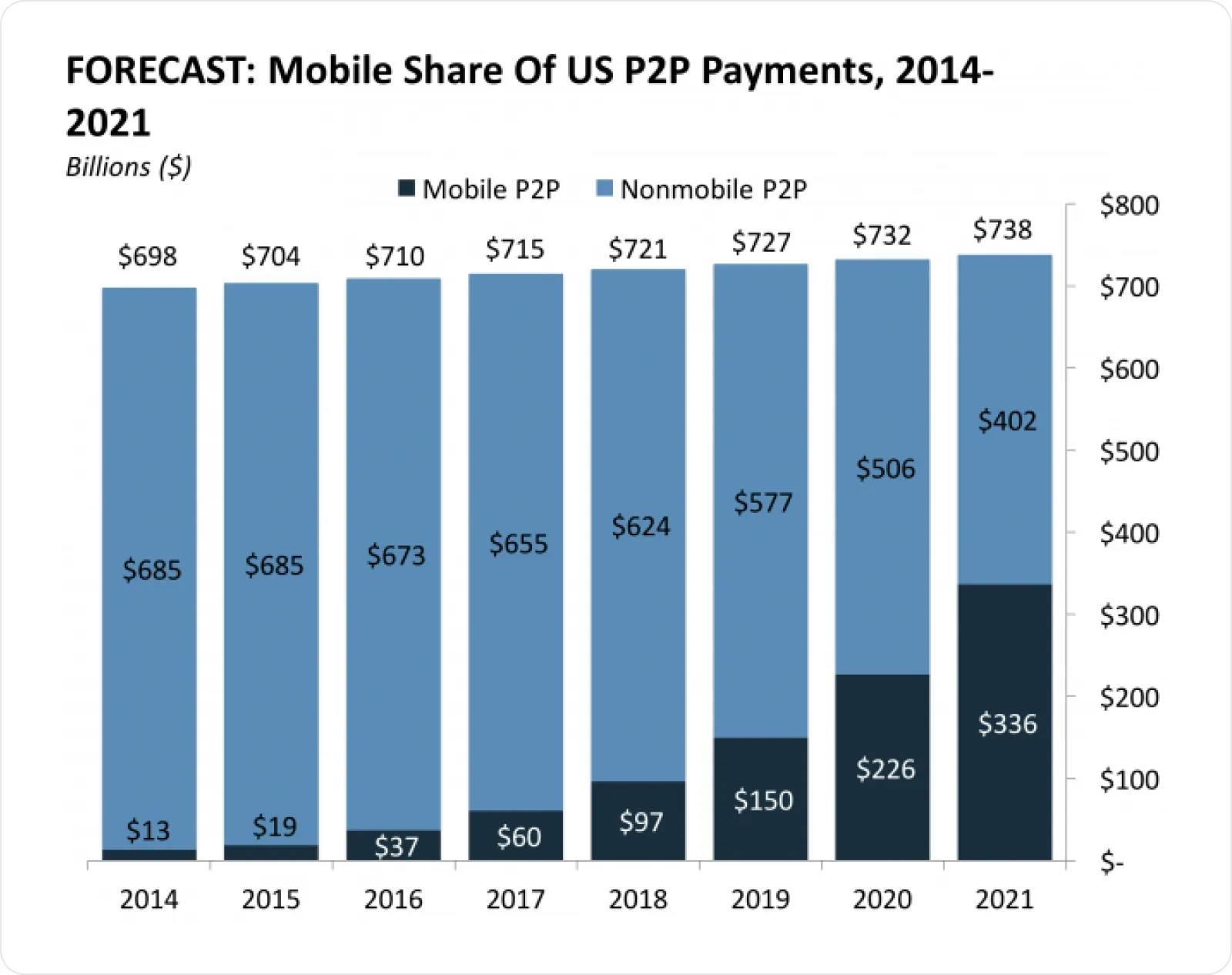Please note: This post contains affiliate links and we may receive a commission if you make a purchase using these links.
TABLE OF CONTENTS
The history of bank lending goes back thousands of years. Farmers in ancient Mesopotamia and merchants in ancient Greece all used lending methods to secure loans to plan for crops, pay for goods or fund building projects. But the money was always offered at a cost, and paying it back came laden with added interest. (In the eighteenth century, borrowers that failed to pay back their loans would even wind up in prison or forced to work as indentured servants.)
While those days are long gone, traditional loans can still come with hefty fees, penalties and interest rates. And though banks are still a favored option for those with strong credit, what happens to those that are denied a loan? Luckily there's another option available for entrepreneurs and small business owners looking to raise capital without being limited to traditional lending. Peer-to-peer lending, also called P2P, has been around for the last 20 years and has helped millions of people get funding for their businesses.
Get Up to a $500 Bonus When You Set Up a New Small Business Account with Bank of America.
Learn MoreWhat Is Peer-to-Peer Lending?
Peer-to-peer lending (P2P), also referred to as market lending, is relatively new. And just to get it out of the way, borrowing money from your brother-in-law or best friend for your business startup is not the same thing. P2P lending is accomplished via a platform that matches borrowers with lenders. This form of lending works with online platforms such as LendingClub and Peerform that connect investors with borrowers effectively by sidestepping banks.
Following a P2P strategy can benefit both the lender and the borrower. For one, investors lending money have the potential to earn a higher return. This is an especially attractive option considering the low interest rate and returns offered by banks and other traditional investments. Borrowers may be able to gain more agreeable terms and lower rates when compared to those offered by banks and credit cards. (The rate terms will depend on a borrower's credit history.) Still, even borrowers with a poor credit background have the chance of acquiring a loan through a P2P platform as opposed to using a bank when the chances of being rejected for funding are much higher.
How Peer-to-Peer Lending Platforms Work
Traditional banks are funded by their customers and the central bank. P2P lenders, however, operate differently and are comprised of “crowds” of investors — individuals and companies — willing to lend money for a better return. The potential of earning a higher interest rate by lending money helps provide investors with the incentive to support entrepreneurs and small business owners.
The rules around P2P lending tend to be less strict than bank lending, but the alternative investment option still includes an application process, credit checks and conducting a risk assessment of the borrower. Borrowers approved by the lending company must follow a schedule and make monthly payments that consist of a portion of the principle and the interest. (Late payments come with an added fee.) Once the loan is paid off by the borrower, the lenders receive their principal back, in addition to the interest earned as part of their investment. The lending company that facilitated the transaction between the lender and the borrower deducts a fee — in addition to the added lender (origination) fee paid by the borrower — and the process begins all over again.
If, by chance, a borrower fails to pay back a loan, the lending company takes on the role of the debt collector.

Top Peer-to-Peer Lending Platforms
In 2014, there were approximately 53 million users that took advantage of P2P lending. By 2020, the number hit a projected increase of 126 million users. Forecasters are expecting this growth trend to continue, with P2P lending expected to reach a value of $1 trillion dollars by 2025. Popular P2P platforms that will benefit and contribute to this increase in value include:
- Upstart: Founded in 2005. Starting interest rate of 7.95%. Minimum credit score of 640. Fees include origination fees ranging between 0-8% and $15 late payment fee.
- Prosper: Established in 2010. Starting interest rate of 5.9%. Minimum credit score of 600. Fees include origination fees ranging between 1-5% for 3-year term, 2-5% for 5-year and $15 late payment fee.
- Payoff: Launched in 2005. Starting interest rate of 6%. Minimum credit score of 640. Fees include origination fees ranging between 0-5% and $15 late payment fee.
- Peerform: Established in 2010. Starting interest rate of 5.9%. Minimum credit score of 600. Fees include origination fees ranging between 1-5%, but loans are limited to select states.
- Funding Circle: Started in 2010 with 100,000 investors and growing. Starting interest rate of 11.29%. Minimum credit score of 660. Fees include origination fees ranging between 3.49-6.99% and late payment fee of 5% of the missed payment.
Is It Worth Borrowing from and Investing in Peer-to-Peer Lending?
Borrowing money through a P2P platform is proving to be a worthwhile alternative for many small business owners who may not have the time, patience or even opportunity to work with a bank and also navigate through the one-sided application process that in the end would potentially saddle them with unfavorable terms. But peer-to-peer lending also includes fees along with interest rates that a borrower will need to pay back. Risk and reward also comes with lending money. Key benefits and drawbacks for both borrowers and lenders include:
Pros and Cons of Being a P2P Borrower
Pros:
- Source of funding for people that do not qualify for a bank loan or want an alternative to traditional loans
- Less red tape than dealing with a bank
- Easy application process
- Quick access to funding
Cons:
- In addition to interest fees, lenders may also charge origination fees as high as 8 percent of the loan
- Even though your loan application was approved, there is always a risk that you will not receive funding if investors do not support your loan
Pros and Cons of Being a P2P Lender
Pros:
- Opportunity to receive a higher return than through bank savings rates or other traditional investments
- Greater transparency by knowing where your money is going and supporting entrepreneurs and small businesses that you believe in
- The risk is spread out between a larger group (crowd) of investors
Cons:
- There’s risk that you can lose your investment if a borrower does not pay it back and recouping efforts fail
- Although some platforms provide investors with more say and involvement on where their money goes, some just clump it in with other crowd investors, limiting any decision-making as far as where investments go
Making the Right Decision
Money is the lifeblood for every small business. The need may come in the form of new equipment or to support expansion plans. When money is tight, it’s important to consider all of your options and look at different and unconventional ways to find funding. P2P can be part of your strategy when it comes to funding your business. It will take some research to make sure that you find the best loan options. Your options, of course, will vary depending on your credit history, loan amount and what the money is planned for.
Ultimately, going through a P2P platform may prove to be the best option for your needs. The chances for loan approval and speed of funding will help sidestep traditional lending institutions, though banks and credit unions are still an option that may be worth considering depending on your needs. The fact, however, remains that P2P loans are growing, providing both borrowers and lenders with new opportunities to benefit from this new model of lending and funding.
Get Up to a $500 Bonus When You Set Up a New Small Business Account with Bank of America.
Learn More
Peter Mavrikis
Peter Mavrikis is an author and editor with over 25 years of experience in publishing. He has worked as the Editorial Director for Barron’s Educational Series, as well as Kaplan Test Prep, where he ran the test prep, foreign language, and study guide.
like what you’re reading?
Get Fresh Monthly Tips to Start & Grow Your LLC





